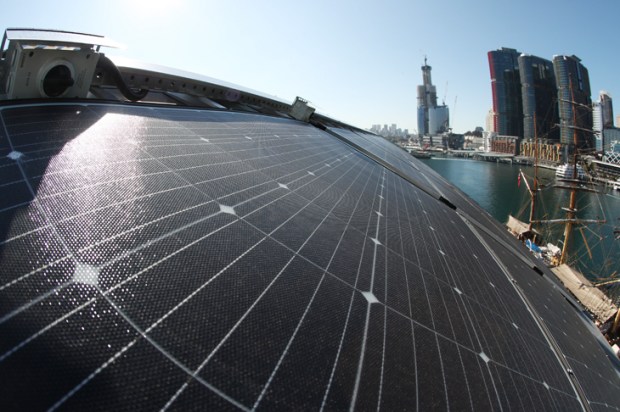Learn to live with it. This belated governmental message recognising that coronavirus and its infinite varieties are here to stay is equally appropriate for climate change, whatever its cause. With a federal election in a few months time, reality is the best response to political agitators demanding Australia take urgent and economically disastrous action on climate change or face ‘catastrophic and irreversible’ damage to our world. By climate alarmists’ own criteria, and as a significant but little noticed pre-Christmas report from the International Energy Agency on the current coal market boom reveals, the emissions measures required to save us are not doing so – and, without major interventions and technological breakthroughs, don’t look like doing so this century. China and India rule the climate roost; with only a little space for wiggle-room at the policy periphery, Australians (and their governments) must learn to live with the reality that climate change is out of our hands — and focus on issues Australia can control.
To the IEA, coal, as the single largest source of global carbon emissions and Australia’s second-major export, remains the key problem, especially after December’s Glasgow Climate Summit knocked back a proposed ban on coal. “The historically high level of coal power generation is a worrying sign of how far off-track the world is in its efforts to put emissions into decline towards net zero.” In 2021, coal power hit a global record in rebounding from its Covid-19-induced dip in 2020 that the IEA expects will “drive worldwide demand to an all-time high in 2022 …and will remain there through 2024”. The inevitable conclusion by the IEA is that, , as things currently stand, ‘We will have little chance, if any at all, of limiting global warming to 1.5C.’ With China and India increasingly dominating coal and their consumption continuing to grow for years to come (notwithstanding their massive investment in renewables) and with the Western world now relatively minor players, there is no chance whatsoever of implementing what the IEA says is the required “strong and immediate actions by government to tackle coal emissions in a way that is fair, affordable and secure for those affected”.
Western economies can pledge themselves silly with zero-emissions targets at feel-good environmental talkfests, but the IEA says the consequential “very strong implications for coal are not yet visible in our near-term forecasts, reflecting the major gap between ambitions and action”. The reason is obvious; Asia dominates the global coal market, thereby holding the key to emissions — and so to ‘global warming’. China alone, as the world’s largest coal producer and importer, accounts for more than half of global demand, with its power generation a third of global consumption.
Adding the rapidly growing India to China’s coal dominance lifts their combined total to two-thirds, with India set to increase its share. As the IEA says, “These two coal-dependent economies with a combined population of almost 3 billion people, hold the key to future coal demand. In India, stronger economic growth and increasing electrification are forecast to drive annual coal demand growth of four percent with S&P analysts expecting India to become the world’s largest importer of thermal coal this year. Coal for industrial use presents a challenging problem, with India’s cement and steel production expected to triple by 2050, with a consequential rise in industrial coal demand to 800 million tons, 2.5 times current usage. For most industrial purposes where coal is used, such as iron and steel production, there are not many technologies that can replace it in the short term. A recent Indian think-tank report concluded that its quest for zero emissions depends on technological advances that are “contingent on support from developed countries in terms of low-cost finance and technology transfers or co-development. The focus should be on this kind of climate action, not words”.
So, the fate of coal (and ‘global warming’) depends not on how relatively small emitters like Australia or even larger ones like the US (with around 10 percent) cut their emissions. It all really rests on how quickly and effectively the two giants move to implement the (less stringent) net zero commitments they made at Glasgow.
There’s something else that greenies will have to learn to live with. To mark the eventual triumph of enterprise and effort over protester ratbaggery, illegal obstructionism, foreign-funded lawfare, the long march of the Bob Brown brigade, political negativism and financier cowardice (especially from Australian banks) the dreaded Adani, under its new conflict-free name Bravus, has started the new year by shipping the first coal from its Carmichael mine in Queensland’s Galilee basin.
When Adani bought Carmichael over a decade ago to supply its Indian generating industry, it envisioned building Australia’s biggest thermal coal mine producing 60-million-tonnes a-year with a 400-km rail line for around A$16 billion. After controversial delays and investor reluctance, it shrank the mine plan in 2018 to 10 million tonnes a year (for which there is a secured market). Although Adani has not disclosed the cost of the smaller mine and a 200-km rail line that links into an existing railway, the project has been estimated at $2 billion. Last year’s ASIC accounts showed Adani owing $1.8 billion to its Indian parent companies and $400 million in advances from a related company against coal delivery. Its $1.3 billion in tax losses so far means that “it is not likely that taxable income will be earned in the foreseeable future”. Adani’s success in surviving against the odds says more about the determination of its Indian owners than it does about Australia’s welcome to a significant foreign investor from a strategically important country.
Learning to live with ‘global warming’ also means continuing to cope with the dire warnings of climate apocalypse propounded not only by Greta’s Extinction rebels, Prince Charles thought-bubbles, green-obsessed school-teachers, foreigners with special agendas, and renewable-energy carpet-baggers with vested interests, but also by respectable organs like the Australian Academy of Science that last year warned that “even if the world’s governments meet their current Paris pledges on time, the Earth is likely to reach average global surface temperatures of 3 C above the pre-industrial period during this century, with catastrophic consequences”.
So, what’s new? Climate rationalist Bjorn Lomborg recently outlined 50 years of stunningly incorrect predictions. “At the first UN environment summit in Stockholm in 1972 we were warned that we had just 10 years to avoid catastrophe; in 1989, the head of the UN’s Environment Program gave us just three years to “win — or lose — the climate struggle”; in 1982, the UN was predicting planetary “devastation as complete, as irreversible as any nuclear holocaust” by the year 2000. Fifty years of panic clearly haven’t brought us anywhere near solving climate change. We need a smarter approach: one that stops scaring everyone and focuses on realistic solutions such as adaptation and innovation. And by funding the innovation needed to eventually make clean energy cheaper than fossil fuels, we can allow everyone, including developing countries, to sustainably go green” — without going broke.
Got something to add? Join the discussion and comment below.
Get 10 issues for just $10
Subscribe to The Spectator Australia today for the next 10 magazine issues, plus full online access, for just $10.
You might disagree with half of it, but you’ll enjoy reading all of it. Try your first month for free, then just $2 a week for the remainder of your first year.














Comments
Don't miss out
Join the conversation with other Spectator Australia readers. Subscribe to leave a comment.
SUBSCRIBEAlready a subscriber? Log in